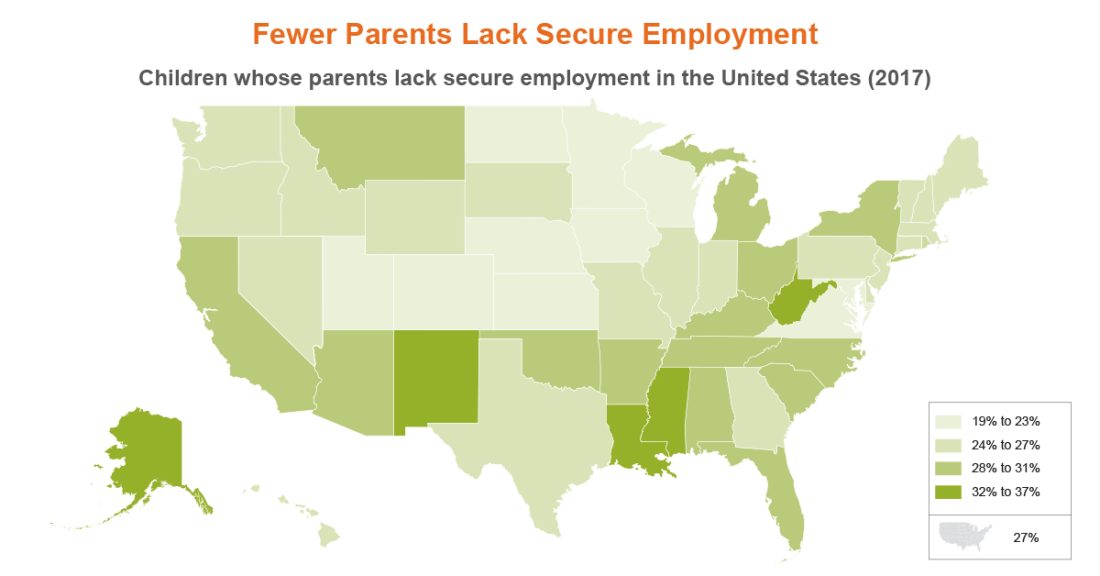Strong Economy, Secure Employment: Parents Made Gains in 2017 Data

It took 10 years — more than one-fifth of many people’s working lives — but the percentage of children whose parents lack secure employment has finally fallen back to prerecession levels nationally. It’s also true in most, but not all, states.
In 2017, 27% of all children in the United States — more than 20 million kids — were living in families where no parent had regular, full-time employment. This rate is the same as it was in 2008, the start of the Great Recession. After peaking in 2010, the percentage has fallen gradually since — but never more than one point per year.
In 18 states, the District of Columbia and Puerto Rico, the 2017 rate remains higher than the 2008 rate, but the difference is greater than two percentage points in only four places:
- In New Hampshire, 25% of kids had no parent securely employed in 2017 versus just 21% in 2008.
- In New Mexico, 36% of kids had no parent securely employed in 2017 versus just 30% in 2008.
- In West Virginia, 37% of kids had no parent securely employed in 2017 versus 32% in 2008.
- In Puerto Rico, this rate remains stubbornly high: 56% of kids had no parent securely employed in 2017 versus just 51% in 2008. Interestingly, the total number of children who fit this statistic fell by 131,000 kids over this same time span. As data become available in the wake of 2017’s Hurricane Maria, the island’s shrinking child population — and the economic well-being of those who remain — will be important factors to watch.





